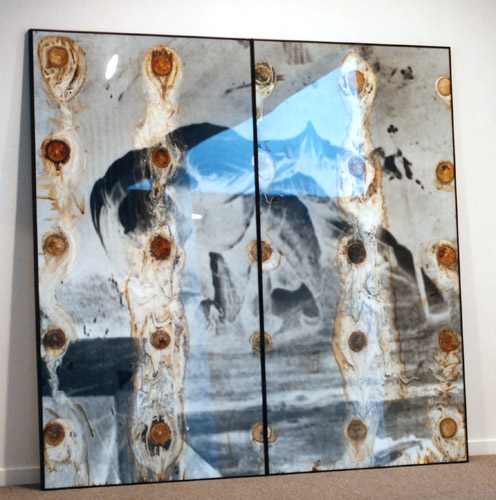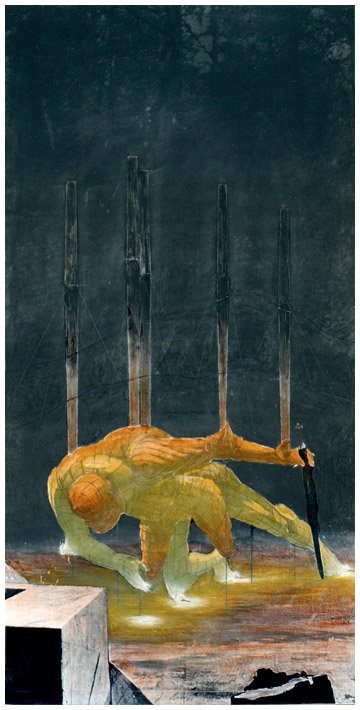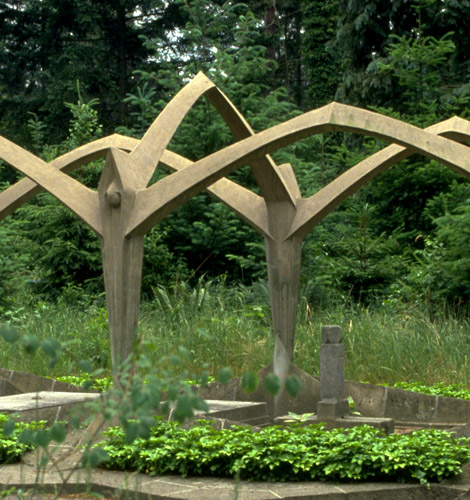Study:
Falling Knight Furnace/Forest - Study: Wissinger
Tomb Furnace/Orchard
Performative
kiln/furnace
proposals: pencil and pastel on b&w photo collage, 1990
Far left: Metabolism
Study (Falling Knight),
b&w photo, orange slices, glass, metal, silicone, installed Gallery
Paule Anglim, San Francisco, CA, 1996
Left center: Study:
Falling Knight Furnace/Forest, 64 in. x 32 in.,
pastel on photo collage.
Right center:
Study: Wissinger Tomb Furnace/Orchard, 64 in. x 40 in.,
pastel on photo collage
Far right: Wissinger
family tomb, detail, cast concrete, crypts, landscaping, Standsdorf,
Germany
Study:
Falling Knight Furnace/Forest is a study for a kiln/furnace
project based on an image of a falling knight from the resurection
panel
of
the
Isenheim
Alterpiece
by
the painter Matthias Grünwald, the background is a forest
image. This image was also used in Metabolism Study (Falling
Knight), 1995, one of a series of Photo Process Works, relating
the chemical and visual tranformation, caused by the insertion
of orange slices against the photo's emulsion, of the image
to fire and metabolism.
|
Study:
Wissinger Tomb Furnace/Orchard, 1990, is
one of a series of conceptual proposals for environmental
kiln/furnace art works. This series of proposals extend
the landscape and geologic themes investigated in a concurrent
group of actual kiln/furnace projects done in the landscape
from 1979 to 1992. Study: Wissinger Tomb Furnace/Orchard, explores
issues of spiritual and personal history of the artist,
in particular his family history as the great-grandson
of German immigrant farmers who settled in the Pacific
Northwest.
The
image of the Wissinger tomb as an underground furnace
comes from an actual crypt of a German family visited by
the
artist in a graveyard in Stahndsdorf, Germany. This tomb,
a complex crystalline structure that emphasizes spiritual
values of inorganic form, was designed by Max Taut, a
noted German Expressionist architect of the 1920’s. The
flues of the furnace extend upward, hypothetically through
a fruit orchard, symbolic of the crops grown by the artist’s
family in both Europe and North America. |


